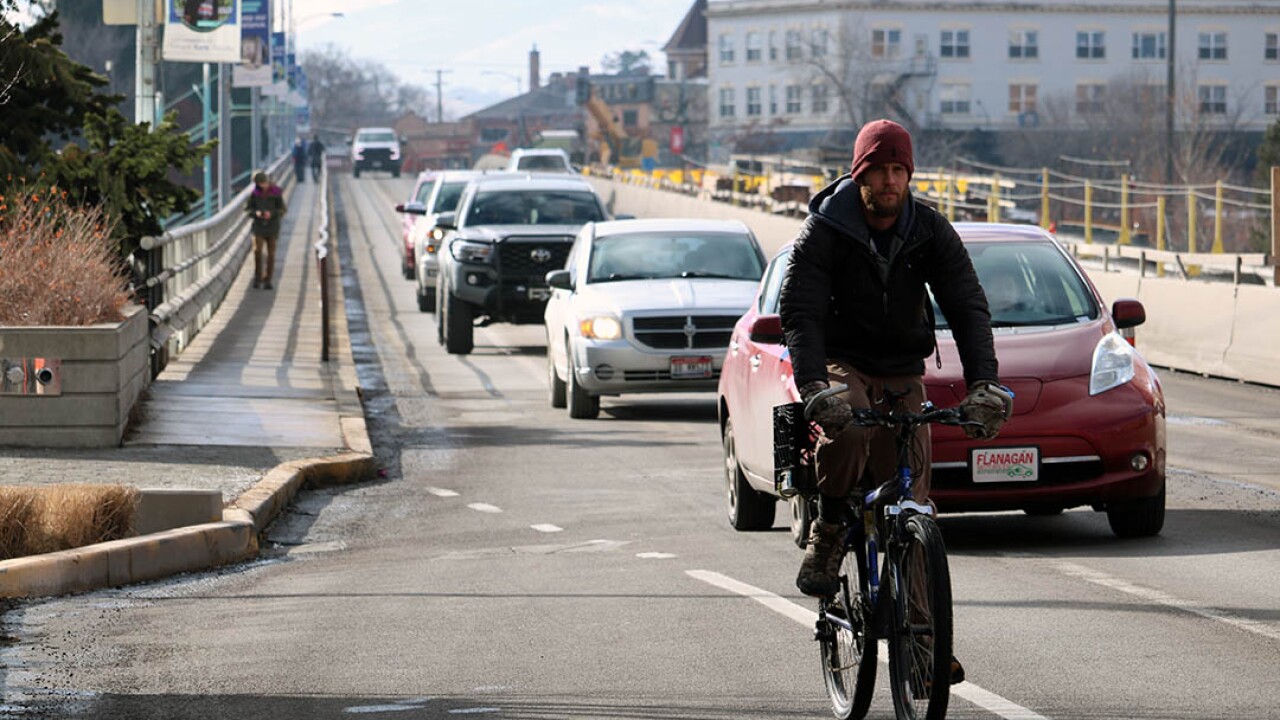MISSOULA — The latest draft of Missoula’s long-range transportation plan leans heavily on bike lanes, paths, and complete streets, but shies away from investing in new connections, such as an interchange at Russell Street and Interstate 90, or widening Mullan Road.
The Transportation Policy Coordinating Committee this week got a look at what has emerged as the plan’s list of preferred projects and how to disperse an estimated $181 million funding over years to improve the metropolitan area’s transportation network.
On the preferred list are such projects as bike lanes, greenways, shared-use paths, and complete streets. Out are the larger auto-oriented projects, including the Russell Street interchange, once eyed as a way to reduce pressure on North Reserve.
“The Russell to I-90 project didn’t make it into the recommended project list, in part due to the cost of that project,” said Aaron Wilson, the city’s transportation planner. “It’s an expensive one to complete. Not to say it won’t happen or there won’t be an opportunity to do that.”
The projects proposed in the city’s new transportation plan could enhance a number of city goals and guide growth for several decades. Missoula’s population has grown roughly 6% over the last decade, and the city is pushing to reduce single-occupancy vehicle trips well below its current level.
Jennifer Wieland, a national transportation consultant with Nelson-Nygaard, said the current draft considered two growth scenarios, including “business as usual” and a strategic focus on inward development.
The two growth scenarios were then reviewed against the city’s three transportation scenarios, including new connections, enhancing existing connections, and focusing on regional equity.
All three scenarios offered unique benefits, according to Wieland.
“We heard a pretty strong preference for enhanced connections and regional equity,” said Wieland. “There were also a lot of folks interested in a mix of all three scenarios, feeling like there was specific projects in new connections that were really important.”
While public participation was open to all but remained light, a recommended scenario emerged after months of work. It now includes closing gaps in the existing transportation system and completing investments already underway.
It also includes complete street connections and active mode facilities, such as trails and bike lanes.
“We really focused on the neighborhood and regional connections, trying to support inward growth,” Wieland said. “We wanted to make sure we were connecting to some of the key investments the region is already making. We wanted to incorporate the complete street connections.”

The resulting list of projects includes two lengthy categories – recommended projects and illustrative projects. The recommended projects range from a $13 million trail from Mullan Road to Frenchtown and a $3 million shared-use path along Mullan Road. It also includes $8 million to extend the Milwaukee Trail and $30 million to make transit and bike improvements to Brooks Street.
The illustrative list included the Russell Street interchange and widening Mullan Road, among others.
“There is flexibility to move projects between the recommended and illustrative list,” said Wieland. “There are times when an opportunity presents itself and you want to be able to grab a project and move it forward with a funding source you hadn’t anticipated. There are trade-offs we needed to make.”
While several parts of Missoula are seeing significant growth, including the South Hills and the Mullan area, the city has placed a new focus on the Scott Street area, where a number of housing projects are either underway or planned.
While the Russell Street interchange didn’t make the cut, Wilson said transportation planners looked at other ways to improve connectivity in the area. Recommended projects include bike paths, trails, and extending Howard Raser Drive.
“We’re trying to accommodate future growth in this area,” Wilson said. “This is an area of rapid growth, and we wanted to make sure we have these right.”
Members of the Missoula City Council who sit on the Metropolitan Planning Organization suggested that a Russell Street interchange at I-90 didn’t make the cut when compared against the region’s other transportation needs.
The interchange has been proposed for decades, but for some, it’s viewed as unattainable due to the estimated $70 million cost. That funding, they believe, could be spent elsewhere.
“With all the development and intentional development were seeing in the Eastside and Northside neighborhoods, I’m not sure it (interchange) would provide any benefits to the neighborhood,” said council member Mirtha Becerra. “There are other projects that would have a more significant benefit to the neighborhood, including those that are non-motorized.”
But some members of the transportation committee weren’t as certain, suggesting that public participation was limited during the planning process and that a Russell Street interchange could provide wider community benefits.
Don MacArthur said the plan should consider more investment in vehicular transportation, especially in the Scott Street area.
“There’s a lot of areas out there underserved by roads,” he said. “I think we’re starting to develop into them in a pretty substantive way. I’m identifying a lack of railroad crossings. That whole area is a little landlocked and isolated.”
Wilson said some areas, including that around Scott Street, warranted a second look.
“The city is going to move forward with some strategic master planning in that Scott Street area,” he said. “We’ll have to figure out how people will get in and out of that neighborhood. There’s going to be a lot of activity here. We need to do some focused planning and figure out how that growth is going to be accommodated.”



